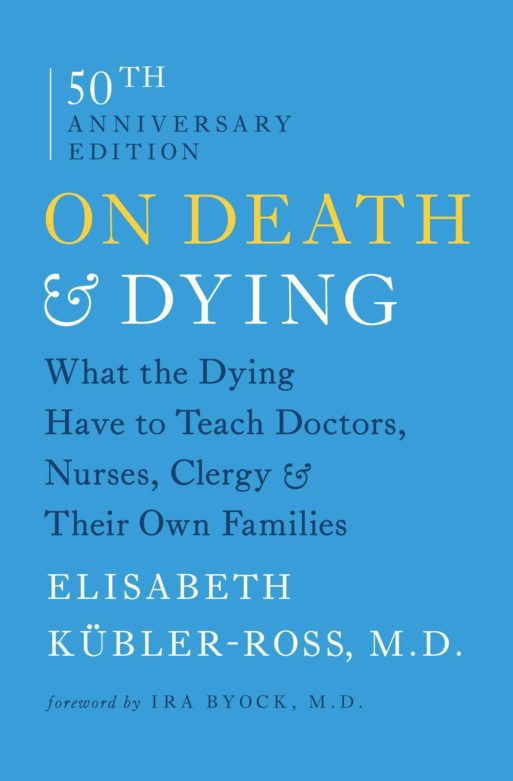 (1926-2004) remains one of the most influential American psychiatrists of the twentieth century. Her “five stages of grief” model– alternately called the “Kübler-Ross model”– is still widely used, and has gained a good deal of cultural currency. This model was originally laid out in her groundbreaking work, On Death and Dying, written in 1969 and based on her experiences working with patients dying of terminal illness. She identified five “stages” the patients tended to go through when dealing with their imminent mortality: denial, anger, bargaining, depression, and acceptance.
(1926-2004) remains one of the most influential American psychiatrists of the twentieth century. Her “five stages of grief” model– alternately called the “Kübler-Ross model”– is still widely used, and has gained a good deal of cultural currency. This model was originally laid out in her groundbreaking work, On Death and Dying, written in 1969 and based on her experiences working with patients dying of terminal illness. She identified five “stages” the patients tended to go through when dealing with their imminent mortality: denial, anger, bargaining, depression, and acceptance.
Today, even people completely unfamiliar with the field of psychiatry could rattle off those five stages. But like most works of scientific and scholarly importance, it’s worth questioning: is this model still relevant? Many experts today largely disavow the five stages model, not because the emotions it describes are inaccurate, but rather because understanding grief as a series of discrete stages is limiting. Numerous “counter-models” have been proposed; essentially, however, the common consensus is that not everyone will experience grief as a linear progression through different stages.
 Today’s thinking on grief instead emphasizes the uniqueness of individual experience. Grief can be chaotic; people can experience anger simultaneously with denial or sadness; a seeming “acceptance” may be followed by a “relapse” into an earlier stage. None of this is strange or unhealthy, according to grief counselors and experts.
Today’s thinking on grief instead emphasizes the uniqueness of individual experience. Grief can be chaotic; people can experience anger simultaneously with denial or sadness; a seeming “acceptance” may be followed by a “relapse” into an earlier stage. None of this is strange or unhealthy, according to grief counselors and experts.
The interesting thing about On Death and Dying — which spawned a series of death-related psychiatric works by Kübler-Ross — was that the observations which the model was based on regarded the grief of facing one’s own mortality, rather than that of a loved one. This is surprising, considering the model is most typically applied to the grieving that accompanies the death of a family member or close friend. But as Kübler-Ross defines it, the experience of grief can be located in any profound loss: divorce, transition, the loss of a job, a big move, and, of course, the death of a loved one.
In this sense, Kübler-Ross’s work was hugely important, especially given the context of its time. Few people before her had done serious work in the field of grief. She opened the conversation, so badly needed, on a previously taboo topic. Even as there are shifts and changes in the field, as opinions differ over whether one should “let go” or “hold on,” what emotions one should expect, the reality is that we may not be having any of these conversations if it weren’t for On Death and Dying. That alone makes taking a look at this book worthwhile.
- Read our article on The Stages of Grief.
- Check out On Death and Dying at Google Books.
- Learn about grief and children by reading our interview with Patricia Murphy of Josie’s Place.

 On Death and Dying, by Elisabeth Kübler-Ross (1969)
On Death and Dying, by Elisabeth Kübler-Ross (1969)


 “As Tears Go By” by Marianne Faithfull
“As Tears Go By” by Marianne Faithfull

 Funeral Favors Offer Visitors a Tangible Memento
Funeral Favors Offer Visitors a Tangible Memento















